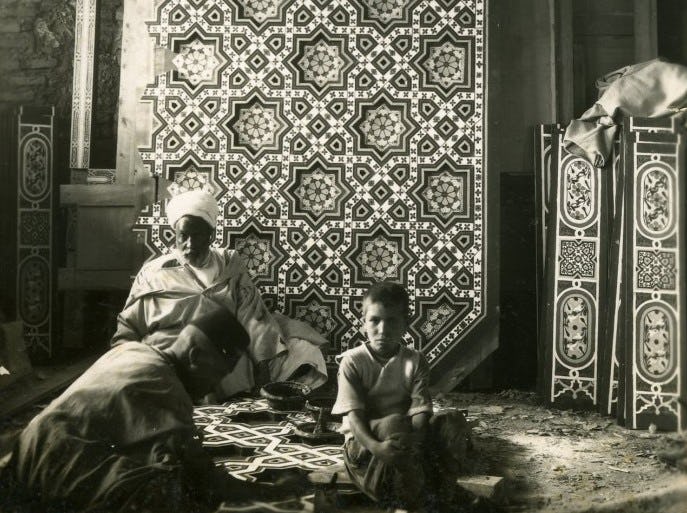Carved Wooden Ceiling and Muqarnas Squinches with Gilded, Painted, and Mirror Insets ('Ajami Technique)
Date18th century
PeriodOttoman
MediumWood, polychrome pigments, gilding
DimensionsOverall: 171 3/4 x 180 in. (436.2 x 457.2cm)
ClassificationsWoodwork
Credit LineCourtesy of the Doris Duke Foundation for Islamic Art
Object number64.13
DescriptionInteriors of affluent homes in Damascus were typically decorated from top to bottom. The ceiling overlooking the ‘ataba, or antechamber, of the Ottoman Gallery is no exception. The ceiling is composed of long, decorated planks of wood framed with muqarnas, a honeycomb vault-like embellishment that often appears in architecture throughout the Islamic world. The painting technique used to decorate the ceiling is known as ‘ajami, a technique wherein gesso is applied in relief, illuminated with metal leaf, and tinted with colorful glazes. As visitors move through the room, light glimmers and dances off of the illuminated surfaces and the tiny mirrors inlaid into the surface of the ceiling. Today, the decoration of the wooden ceiling appears dark brown with muted tones due to a layer of varnish applied at a later date. Made of natural resins, the varnish darkened the surface color over time. The original, unvarnished ceiling would have been bright and colorful.
On View
On viewCollections
1938-1939
1750-1800, with some panels added in 1953-54
18th - 19th century
18th - 19th century
19th century














